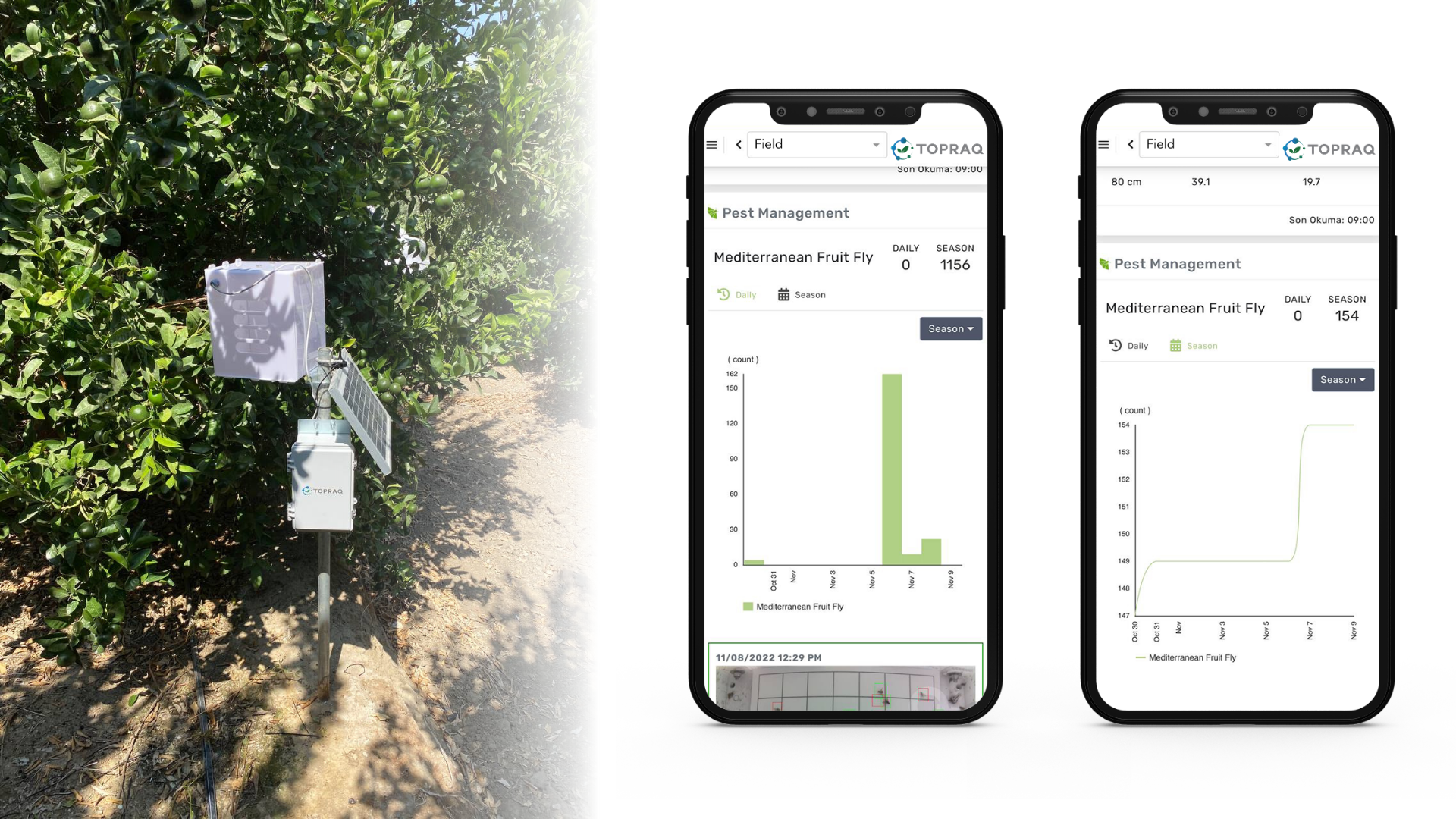The Mediterranean Fruit Fly (Ceratitis capitata), also known as Medfly, is one of the most destructive pests affecting a wide variety of fruit crops. If you’re a grower, you’ve likely heard about the devastating Mediterranean Fruit Fly damage to citrus, stone fruits, and other soft-skinned produce. Fortunately, there are natural methods for controlling the Mediterranean Fruit Fly that don’t rely on harmful chemicals.
In this guide, we’ll explore organic and sustainable solutions, including Mediterranean Fruit Fly traps, biological control, and how smart technologies like T-Trap and T-Weather can help you monitor and manage this pest effectively.
What Is the Mediterranean Fruit Fly?
The Mediterranean Fruit Fly is a highly invasive species with a wide habitat range that includes warm-temperate and subtropical areas. The Mediterranean Fruit Fly scientific name is Ceratitis capitata. It lays eggs inside ripening fruit, where larvae feed and cause internal rot, rendering the fruit unmarketable.
Key Mediterranean Fruit Fly facts:
- A single female can lay up to 300–400 eggs.
- The lifecycle accelerates in warm weather.
- It attacks over 200 types of fruits and vegetables.
- It can complete multiple generations per season.
Let’s Talk – Share Your Contact Information!
How to Get Rid of Mediterranean Fruit Flies?
If you’re wondering how to get rid of Mediterranean Fruit Flies, natural and non-toxic approaches are not only effective but also environmentally responsible. Here are some proven Mediterranean Fruit Fly control methods:
1. Mediterranean Fruit Fly Trap
Trapping is one of the most widely used Mediterranean Fruit Fly control techniques. T-Trap, our digital pheromone trap, offers a smarter alternative to traditional traps. It uses species-specific lures and automatically counts catches, providing real-time population trends.
Why use T-Trap?
- It helps in early detection and mass trapping.
- Sends alerts when pest populations spike.
- Reduces unnecessary pesticide use.

2. Degree Day Modeling with T-Weather
The Mediterranean Fruit Fly develops in correlation with temperature. By using T-Weather’s degree day calculation, growers can predict the pest’s development stages and time interventions more accurately. Our T-Weather station:
- Tracks local temperature data.
- Calculates degree days for pest forecasting.
- Sends recommendations on when to apply natural controls.
With degree day data, you can stop the next generation before it begins causing Mediterranean Fruit Fly damage.
3. Fruit Sanitation and Baiting
- Remove fallen and infested fruits frequently.
- Use protein bait sprays with organic-approved attractants.
- Surround vulnerable trees with border baiting to trap adult flies before they reach the crop.
Damages Caused by the Mediterranean Fruit Fly
The Mediterranean Fruit Fly causes significant economic losses in fruit production due to:
- Internal fruit rot
- Premature fruit drop
- Export restrictions and quarantine issues
- Yield and quality reduction
Monitoring tools like T-Trap and timely data from T-Weather can drastically reduce these impacts by allowing early, targeted action.
Are Mediterranean Fruit Flies Harmful to Humans?
While Mediterranean Fruit Flies are not directly harmful to humans, they do pose a serious threat to food security and trade. The infestation they cause leads to Mediterranean Fruit Fly damage that impacts growers’ income and consumer access to healthy fruits.
Mediterranean Fruit Fly Trap
As discussed, a Mediterranean Fruit Fly trap is essential for both monitoring and population reduction. Using T-Trap, you can:
- Monitor fly activity across seasons.
- Integrate trap data with degree day models.
- Automatically generate action alerts.
By combining smart technology and nature-based methods, you can achieve long-term Mediterranean Fruit Fly control and protect your harvest without relying on harsh chemicals.
The Mediterranean Fruit Fly is a persistent and dangerous pest, but with the right natural control methods, it can be managed effectively. Tools like T-Trap and T-Weather bring precision to pest management, empowering farmers with real-time insights and actionable data.
By adopting smart, organic solutions, you not only protect your crops from Mediterranean Fruit Fly damage but also contribute to sustainable and eco-friendly agriculture.

